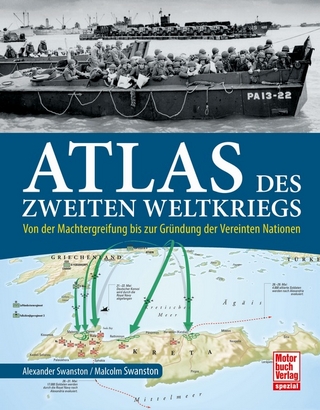
The Windfall Battleships
Agincourt, Canada, Erin, Eagle and the Latin-American & Balkan Arms Races
Seiten
2023
Seaforth Publishing (Verlag)
978-1-3990-6322-7 (ISBN)
Seaforth Publishing (Verlag)
978-1-3990-6322-7 (ISBN)
The full story of the four capital ships taken over from foreign orders during the First World War. Insights into the Latin-American and Balkan naval races that preceded the First World War. The first overview of the naval export trade in Europe and the United States at the beginning of the twentieth century.
This new book explores for the first time the full story of how two Turkish and two Chilean battleships became British capital ships after the outbreak of the First World War. Under construction by the shipbuilding giants of Armstrong and Vickers in August 1914, Sultan Osman I, Re?adiye, Almirante Latorre and Almirante Cochrane became HM Ships Agincourt, Erin, Canada and Eagle. The first three served with the Grand Fleet, fighting at Jutland, while the last was transformed into a pioneering aircraft carrier, which would serve with distinction until sunk while escorting a convoy to Malta in 1942/. While two of the other ships had short lives - cut short by the Washington Naval Treaty - the final ship, Almirante Latorre, would be returned to Chile after the war, for a continuing active career that would last into the 1950s. When finally towed away for scrap in 1959, she was the penultimate survivor of Jutland.
Drawing on extensive archival research, the book begins with an overview of the warships under construction around Europe for foreign customers in August 1914, and how the four ships featured were acquired by the Royal Navy. It then looks at them as manifestations of the international rivalries which directed much of the national budgets of impecunious South American and Balkan states towards armaments. The focus then switches to the British service of the ships actually completed as battleships, and then to the story of the carrier. Although never finished as a battleship, she would play a crucial role in the development of British carrier aviation. Finally, the author traces the stories of the battleships of the Latin-American naval race from the 1920s down to the 1950s.
The stories and back-stories of Agincourt, Erin, Canada and Eagle embrace almost the whole of the twentieth-century battleship era, and they take us down the byways of international naval power, ranging from the Pacific to the Black Sea, and from the line of battle to mutiny and revolution. A fascinating and original story.
This new book explores for the first time the full story of how two Turkish and two Chilean battleships became British capital ships after the outbreak of the First World War. Under construction by the shipbuilding giants of Armstrong and Vickers in August 1914, Sultan Osman I, Re?adiye, Almirante Latorre and Almirante Cochrane became HM Ships Agincourt, Erin, Canada and Eagle. The first three served with the Grand Fleet, fighting at Jutland, while the last was transformed into a pioneering aircraft carrier, which would serve with distinction until sunk while escorting a convoy to Malta in 1942/. While two of the other ships had short lives - cut short by the Washington Naval Treaty - the final ship, Almirante Latorre, would be returned to Chile after the war, for a continuing active career that would last into the 1950s. When finally towed away for scrap in 1959, she was the penultimate survivor of Jutland.
Drawing on extensive archival research, the book begins with an overview of the warships under construction around Europe for foreign customers in August 1914, and how the four ships featured were acquired by the Royal Navy. It then looks at them as manifestations of the international rivalries which directed much of the national budgets of impecunious South American and Balkan states towards armaments. The focus then switches to the British service of the ships actually completed as battleships, and then to the story of the carrier. Although never finished as a battleship, she would play a crucial role in the development of British carrier aviation. Finally, the author traces the stories of the battleships of the Latin-American naval race from the 1920s down to the 1950s.
The stories and back-stories of Agincourt, Erin, Canada and Eagle embrace almost the whole of the twentieth-century battleship era, and they take us down the byways of international naval power, ranging from the Pacific to the Black Sea, and from the line of battle to mutiny and revolution. A fascinating and original story.
AIDAN DODSON has pursued parallel interests in naval and ancient history for over five decades. The latter is manifested in his position as honorary Professor of Egyptology at the University of Bristol, where he has taught since 1996, and a Fellowship of the Society of Antiquaries of London. He also worked for 25 years in UK defence procurement, including as project leader for the Falkland Island patrol vessel, HMS Clyde. He is the author of over 25 books, including works on naval history, published by Seaforth, covering ships of the Imperial German Navy, armoured cruisers, and the fates of enemy warships at the ends of the two World Wars.
| Erscheinungsdatum | 23.09.2023 |
|---|---|
| Zusatzinfo | 80 b/w photos & line drawings |
| Sprache | englisch |
| Maße | 156 x 234 mm |
| Themenwelt | Natur / Technik ► Fahrzeuge / Flugzeuge / Schiffe ► Militärfahrzeuge / -flugzeuge / -schiffe |
| Geschichte ► Allgemeine Geschichte ► Neuzeit (bis 1918) | |
| ISBN-10 | 1-3990-6322-7 / 1399063227 |
| ISBN-13 | 978-1-3990-6322-7 / 9781399063227 |
| Zustand | Neuware |
| Haben Sie eine Frage zum Produkt? |
Mehr entdecken
aus dem Bereich
aus dem Bereich
von der Machtergreifung bis zur Gründung der Vereinten Nationen
Buch | Softcover (2023)
Motorbuch Verlag
24,90 €


